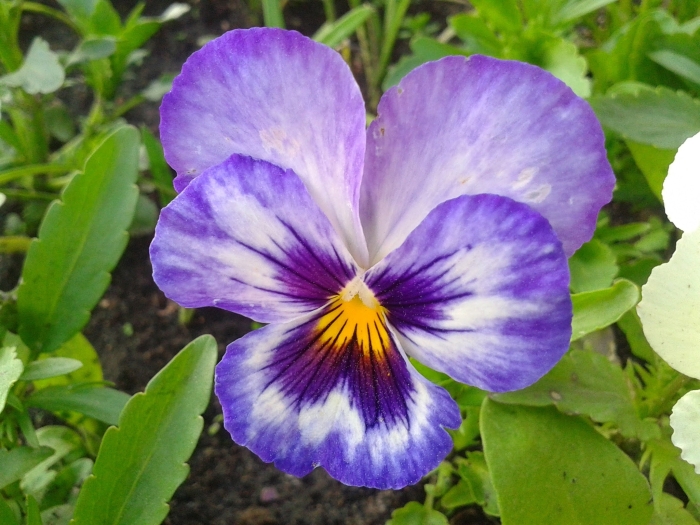Garden Pansy
(Viola ×wittrockiana)
Garden Pansy (Viola ×wittrockiana)
/
/

© Vitaly Radionov
CC BY 4.0
Image By:
© Vitaly Radionov
Recorded By:
Copyright:
CC BY 4.0
Copyright Notice:
Photo by: © Vitaly Radionov | License Type: CC BY 4.0 | License URL: http://creativecommons.org/licenses/by/4.0/ | Uploader: sam1615 | Publisher: iNaturalist |

























Estimated Native Range
Summary
Viola ×wittrockiana, commonly known as the garden pansy, is a hybrid plant derived from several species within the genus Viola, including Viola tricolor. It is a short-lived perennial often grown as an annual or biennial, and is notable for its large, colorful flowers that can display a wide range of hues including purple, blue, red, yellow, and white, often with a distinct face-like center pattern. The garden pansy typically blooms in the cooler months of spring and fall, with the flowers being particularly showy and often used to add a splash of color to gardens during these times. The plant usually reaches 6 to 9 inches (15 to 23 cm) in height and spreads to about 9 to 12 inches (23 to 30 cm).
Garden pansies are valued for their bright and varied flower colors, and their ability to bloom in cooler weather when many other plants are not flowering. They are commonly used in border plantings, mass plantings, as ground cover, and in containers or window boxes. Garden pansies prefer rich, well-drained soils and can thrive in full sun to partial shade. They require regular watering, especially in dry conditions, but are relatively low-maintenance. While generally pest-resistant, they can be susceptible to slugs and snails, and in wet conditions, may suffer from root rot or fungal diseases such as powdery mildew. Deadheading spent flowers can encourage more blooms and extend the flowering period.CC BY-SA 4.0
Garden pansies are valued for their bright and varied flower colors, and their ability to bloom in cooler weather when many other plants are not flowering. They are commonly used in border plantings, mass plantings, as ground cover, and in containers or window boxes. Garden pansies prefer rich, well-drained soils and can thrive in full sun to partial shade. They require regular watering, especially in dry conditions, but are relatively low-maintenance. While generally pest-resistant, they can be susceptible to slugs and snails, and in wet conditions, may suffer from root rot or fungal diseases such as powdery mildew. Deadheading spent flowers can encourage more blooms and extend the flowering period.CC BY-SA 4.0
Plant Description
- Plant Type: Herb
- Height: 0.5-1 feet
- Width: 0.5-1 feet
- Growth Rate: Moderate
- Flower Color: Blue, Orange, Pink, Purple, Red, White, Yellow
- Flowering Season: Spring, Fall
- Leaf Retention: Deciduous
Growth Requirements
- Sun: Full Sun, Part Shade
- Water: Medium
- Drainage: Fast, Medium
Common Uses
Border Plant, Butterfly Garden, Low Maintenance, Potted Plant, Rock Garden, Street Planting
Natural Habitat
Originating from multiple Viola species, including Viola tricolor, and often grown as annuals or biennials
Other Names
Common Names: Hybrid Pansy , Garden Pansy , Lady’s Delight
Scientific Names: Viola ×wittrockiana , Viola hortensis , Viola hortensis var. grandiflora , Viola maxima , Viola tricolor f. maxima , Viola tricolor subsp. maxima , Viola tricolor subsp. maxima-nigra , Viola tricolor var. hortensis , Viola tricolor var. maxima , Viola xwittrockiana , Viola ×hortensis
GBIF Accepted Name: